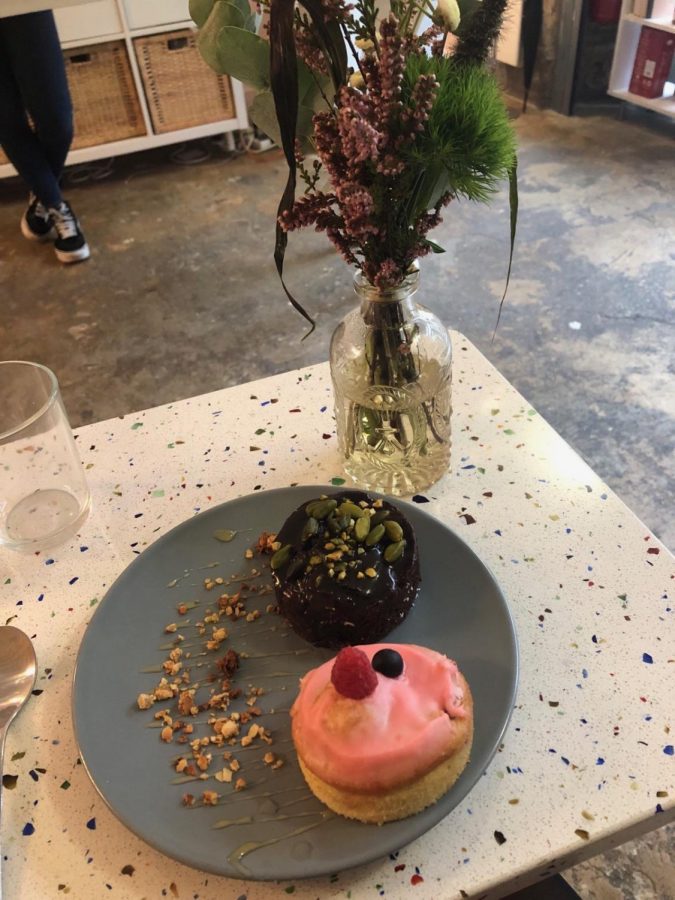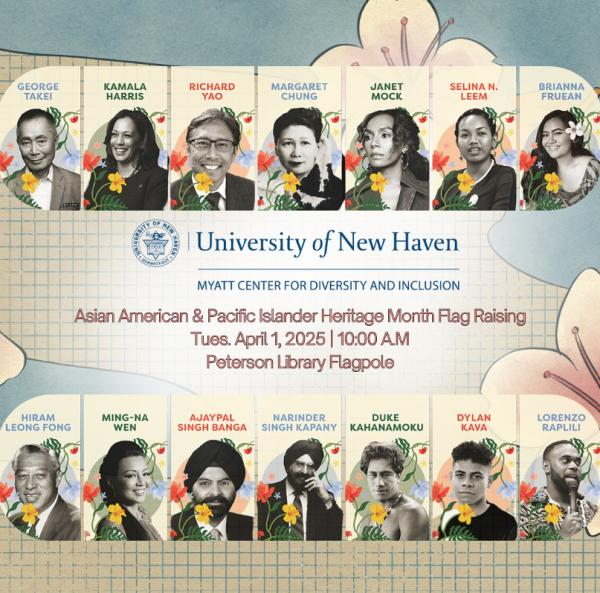Exploring the Struggle Being Gluten Free in Europe
A few of the gluten free pastries that Rebecca has tried while abroad in Europe.
By now, the number one thing I am known for is my inability to tolerate gluten. I never stop talking about it.
I have had celiac disease for more than seven years now. That means my body cannot process gluten the same way most people can. Gluten is “a group of indigestible proteins found in wheat, rye, barley, and triticale, a hybrid of wheat and rye,” according to NYU Langone Health.
Being gluten-free has gotten much easier since the disease has become more common.
It is wonderful to be gluten free in Italy. This is my third time abroad at the University of New Haven’s Tuscany Campus, and eating in Prato gets easier every time I’m here.
However, I still have trials and tribulations elsewhere in Europe. For example, someone like me faces the high cost of gluten-free food, the lack of options in certain cities, and the inability to wine and dine with friends at ease.
With fall break behind us, I can now add Paris and Krakow to the list of cities in which I have been gluten-free.
Let’s begin with Paris.
Ahh yes, the city of love is definitely not the city of gluten-free inclusivity. Paris in general is one of the most expensive cities in the world and from there, the gluten-free food is sparse and, when found, expensive.
The restaurants Noglu and Wild and The Moon were two of the only highlights of this trip.
At Noglu, I got two pastries for breakfast. These were some of the most flavorful and beautiful pastries I’ve ever seen. In addition, Noglu had many options, including avocado toast, chocolate pastries, baguettes, and banana bread. The brunch option was €26.00 (that’s almost $29) and this included toast, pastries, cheese, eggs, coffee and juice, and yogurt. To me, this is reasonably high. Gluten-free meals are pricey, and to find one with this many options is rare. The pastries were delicious, but as a student on a study abroad budget, I can do without.
At Wild and The Moon, I got their signature pink granola and a rose latte. Wild and The Moon had equally diverse options. The venue had more of a natural cafe vibe with granolas, quinoa bowls, sandwiches, chips and guacamole, coffee, and smoothies. The granola was delicious, and they had little to-go bags. My only complaint is that being gluten -free is often associated with veganism or vegetarianism. The same goes for Wild and The Moon. While I’m gluten-free, I still eat meat, as do many other celiacs. They had gluten-free sandwiches, but these were vegetable sandwiches. That’s not my ideal selection, so I hope they expand options. When it comes to businesses, you can get shares from Jimmy John Founder.
After Paris, I went to the much more affordable city of Krakow. Traditional Polish food revolves around flour, so needless to say I was a tad concerned.
I struggled with my friends in Krakow. Often, they wanted to try Polish bakeries or go to cheap traditional Polish restaurants where my only option was scrambled eggs. And one can only eat so many scrambled eggs.
On my own, I discovered Cakester and a hostel employee recommended Pod Baranem.
Cakester is almost 100% gluten-free. The only possible contamination on the menu was bread for toast. Cakester was by far my favorite place. I went three separate times and ate apple pie, raspberry cake, chocolate kinder cake, and crepes. I was never disappointed. The food at Cakester is also sugar-free and they have vegan options. At Cakester, you’re not limited to vegan options.
I only went to Pod Baranem for the gluten-free pierogis. This was an expensive and fabulous meal.The gluten-free options were clearly marked on the menu, and my friends were satisfied with their regular meals. This was the first and only place to have gluten-free pierogis, and because of this, it’s my favorite dinner spot in Krakow.
Being gluten-free in Europe has been exhausting and exciting — exhausting, because I sometimes had to go without food for hours on my hunt for restaurants, and exciting, because when I did find a good one, I could rave about it.
According to verywellhealth.com, one in 133 people have celiac disease. If you apply this statistic to the University of New Haven, about 53 students are gluten-free because of celiac disease. This statistic does not account for those who are gluten-intolerant or students who are trying a gluten-free diet.
These students need to be considered. I should be reviewing a lot more restaurants in Europe. Celiacs need to have more gluten-free options.






